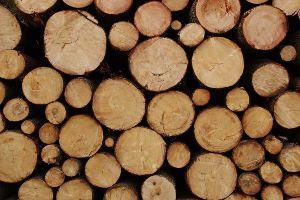Curved wood
Post from EditorialsThere are several ways to get the wood curved temporary or definitive, without causing damage to the material used here is how to get a good result.
Bending wood
Bending wood is undoubtedly one of the most refined works that you can do on this material. The curvature, in fact, gives to the wood a particular shape, it enriches the look and enables you to make furniture or decorative elements of remarkable beauty. The bent wood with the right techniques remains sturdy and durable as the straight one, and takes, in some cases, a particular tension which helps to stiffen the structure.
The suitable woods
 When a timber is cut very thin you can always bend it, with a radius more or less wide depending on the type, but when it comes to bending pieces of greater thickness one should use the suitable essences: use types of wood hard enough, poor of nodes and rather compact as ash, cherry, beech, walnut and oak.
When a timber is cut very thin you can always bend it, with a radius more or less wide depending on the type, but when it comes to bending pieces of greater thickness one should use the suitable essences: use types of wood hard enough, poor of nodes and rather compact as ash, cherry, beech, walnut and oak.
The receive a permanent curve the wood must be perfectly seasoned because, if it was young, it would easily assume the curve but not keep it, unless you let it grow old keeping it fit. Moreover, since the curve is a permanent deformation of the fibers, these must have previously stabilized. The proper preservation of wood, therefore, will be in part responsible for the end result.
The types of curvature
There are two basic ways to bend the wood: the simplest, and suitable to non professional techniques, is the artificial curvature that is to intervene directly on the piece, with cutting and gluing. The second method, which is also quite simple, is to adequately wet the wood to make flexible the fibers and then pass to the curvature.
Carvings curvature
It is the simplest technique that allows to quickly obtain curvatures also quite narrow, but suitable only for decorative elements, since the resistance of the curve is rather limited. The technique consists of making a series of parallel cuts (transversely to the longitudinal axis of the wood) a depth of approximately 3/4 of the thickness of the wood itself. The carvings, which must begin before the area to be bent and end just after, must be carried out with a circular saw blade with teeth of good thickness, because it is essential that they are removed at least 3-4 mm each cut.
The carvings, which must begin before the area to be bent and end just after, must be carried out with a circular saw blade with teeth of good thickness, because it is essential that they are removed at least 3-4 mm each cut.
If you intend to use a manual ripsaw you have previously to accentuate the thickness of the teeth to increase the width of the cut. When the cuts are practiced the wood is ready to be curved: do it slowly and gradually returning backward a few times to allow the fibers of the intact part to stretch without breaking.
Check that the desired curve can be achieved without effort, then apply glue in the grooves and set the piece on a fixed or adjustable curve up to complete hardening.
Bend with a curve
We have said that the pieces bent and glued must be put in shape on a special curve. This can be done in different ways depending on the type of wood to bent.
If you intend to achieve more curved pieces all alike you should make a fixed curve while for various radius curves is convenient to equip yourself with an adjustable type. This, in turn, can be constructed in different ways but, in general, it is suitable for pieces of limited thickness.
The template with thorns
The template with thorns is a surface in solid wood (or multi-layer) thickness of at least 20 mm in which are practiced, according to orderly rows and columns, a series of holes with a diameter of 15/20 mm.
The second element is constituted by the matrix: a rectangular piece of wood or plywood, with a curved side. The matrix is perforated in the center to be locked to the base with a plug-through.
 The piece to be bent is placed against the matrix and maintained curved by two or more pins inserted in the holes of the surface. With this system you can set different radius curves while, creating more than a matrix, one can considerably reduce the radius of curvature.
The piece to be bent is placed against the matrix and maintained curved by two or more pins inserted in the holes of the surface. With this system you can set different radius curves while, creating more than a matrix, one can considerably reduce the radius of curvature.
Other types of curves, suitable for very thin strips or even plywood strips of thickness less than 8 mm, are made with tablets on which are planted the nails (according to the curve to be obtained) that hold in place the elements to be bent.
Wet wood and template
The curvature with wet wood is performed on strips and tablets of limited thickness and softwoods. The piece to bent is put to soak in warm water, leaving it several hours, so that it can soak for good. Then it is put in the form locking it to a template that has the desired shape and is let to dry for a few days. The operation can be repeated. The curve thus obtained is not definitive.
79862 REGISTERED USERS










